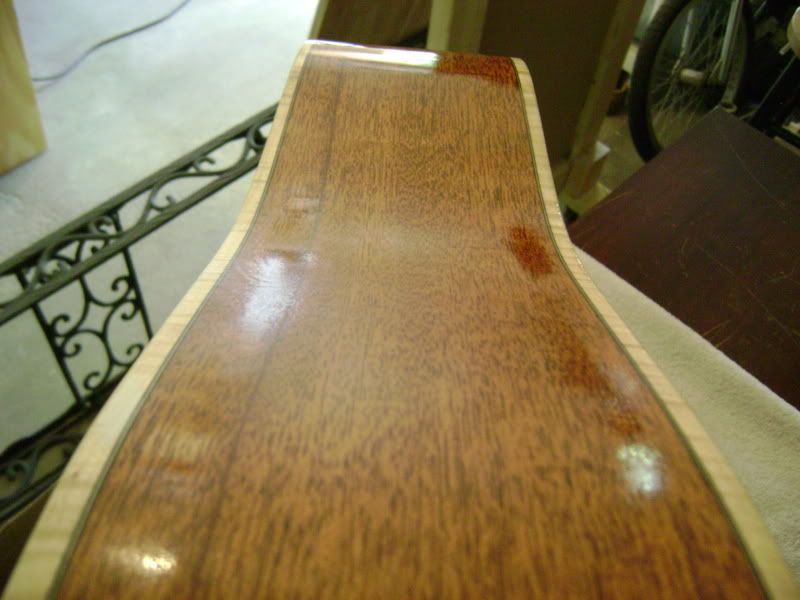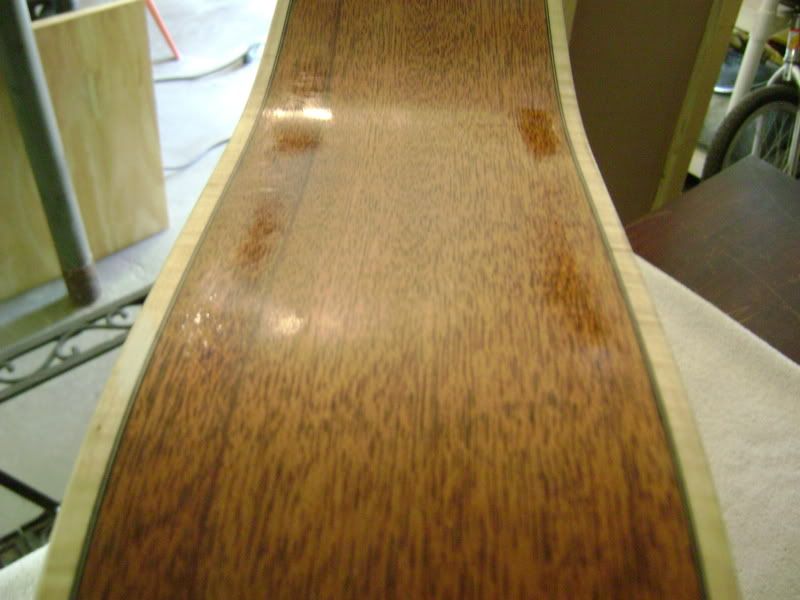I have two dreadnoughts that I'm currently trying to finish. I moved from a low humidity climate to a high humidity climate. The mahogany sides were thicknessed to approx. .085" before bending. I imagine the sides could be as thin as .075" in some areas due to my finish sanding. They're finished w/ nitrocellulose lacquer (which is also very thin, already sanded through on the soundboard and near these kerf prints). The back is sanded and glued w/ a 50' radius form, and the top is sanded w/ a 15' form and glued w/ a 30'. I couldn't imagine that under the circumstances this tension could twist the kerfing like this.



These are pictures taken during the level sanding of my sides. I would like to know if you guys feel I should reinforce this area w/ some more vertical strips?
Also should I just make my sides thicker in the future so I wont run into this problem?